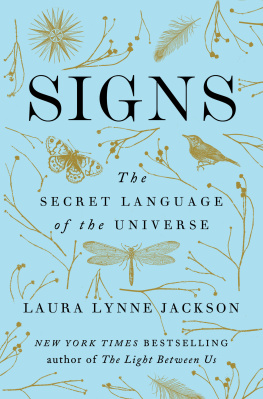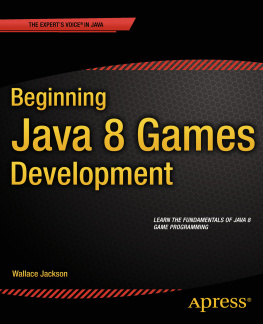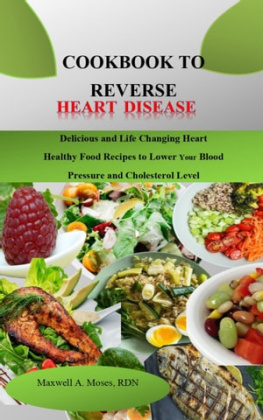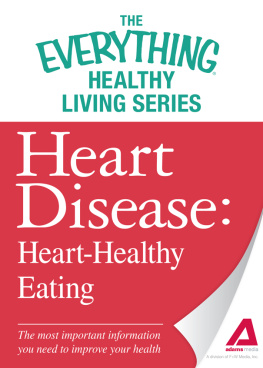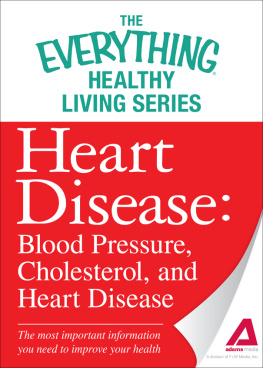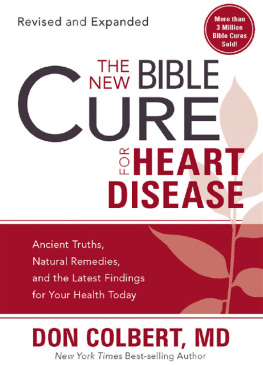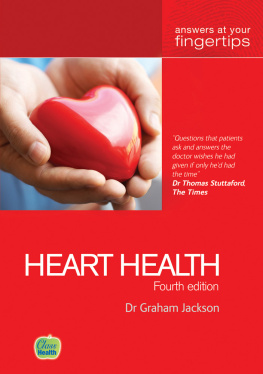An Ageless
Womans Guide to
Heart Health
Your path to lifelong wellness
Elizabeth Jackson, MD, MPH

Text copyright 2013 Elizabeth Jackson
All rights reserved under International and Pan American Copyright Conventions.
No part of this book may be reproduced or transmitted in any form or by any means electronic or mechanical including photocopying and recording, or by any information storage and retrieval system, without permission in writing from the publisher.
This edition is published by Spry Publishing LLC
2500 South State Street
Ann Arbor, MI 48104 USA
10 9 8 7 6 5 4 3 2 1
Library of Congress Control Number: 2013933246
E-book ISBN: 978-1-938170-23-2
Disclaimer: Spry Publishing LLC does not assume responsibility for the contents or opinions expressed herein. Although every precaution is taken to ensure that information is accurate as of the date of publication, differences of opinion exist. The opinions expressed herein are those of the author and do not necessarily reflect the views of the publisher. The information contained in this book is not intended to replace professional advisement of an individuals doctor prior to beginning or changing an individuals course of treatment.
To the lights of my lifeAnders and Aric
With Every Beat
The best and most beautiful things in the world cannot be seen or even touchedthey must be felt with the heart.
HELEN KELLER
Have you ever been told that you have a good heart? Or perhaps you wear your heart on your sleeve. The heart has long been symbolic of kindness, generosity, and love. Just think of all those heart-shaped boxes of chocolate given on Valentines Day! When we fall in love, our hearts sometimes skip a beat, and when we witness our childrens accomplishments our hearts swell with pride. If we want to find true happiness, we are often told to follow our hearts. Women in particular are often described as the heart of the home. As a woman and mother of two teenage boys, I couldnt agree more. But, as a cardiologist with over 20 years of experience in health care, I also have a more clinical view of the heart.
To me, having a good heart means not only that you are kind, but that your heart muscle is strong and healthy! This remarkable muscular pump beats approximately 100,000 times each day, circulating 2,000 gallons of blood through our bodies. Over a normal life span, the heart will beat more than 2.5 billion times. Our hearts assist our lungs, our kidneys, and our digestive system and provide our cells, muscles, and brain with necessary nourishment. In short, we cannot live without our hearts. Maybe thats why the heart has become synonymous with such strong, positive emotions.
Unfortunately, this vital, hardworking muscle has a formidable enemy: heart disease. Heart disease is the leading cause of death for both men and women . In fact, though women tend to fear cancer the most, heart disease is actually the leading cause of death among women of all ages. Today, more than 6.5 million American women suffer from coronary heart disease, and since 1984, more American women than men have died from heart disease. Are you surprised?
Heart disease has long been thought of as a mens issue, but as you can see from the statistics, its an equal-opportunity health problem. What is happening? Are more women getting heart disease than before? No, women have always been at risk; its just that scientific research regarding that risk is relatively new. During the first 80 years or so of the twentieth century, the medical community was made up of predominantly male doctors, who studied and treated heart disease in men. They believed that estrogen protected women from the plaque buildup that occurs in blood vessels and leads to cardiovascular problems. Although estrogen does provide some protection up to a certain age (which we will discuss later in the book), other risk factors are just as prevalent in women as men. New research, involving women, has shed much-needed light on this important issue.
We have learned that heart disease often affects women differently from men. And yet, there are more similarities than differences. Family history, high cholesterol, high blood pressure, diabetes, smoking, and lifestyle issues are the risk factors associated with heart disease for men and women. In both cases, prevention is the best treatment! When it comes to heart disease, changing your lifestyle can save your life.
Thats the first reason I decided to write this book. Although awareness regarding women and heart disease has increased (e.g., the Red Dress Campaign) and information is more readily available than ever before, we still have a long way to go. As they say, knowledge is power; if you understand how the heart works, what keeps it functioning properly, how to avoid risk factors, and what warning signs and symptoms to look for, you can save your lifeor the life of a loved one. Thats powerful stuff.
Secondly, if women are truly the heart of the home, and I believe in many cases they are, you can make a huge difference in your familys health. Despite societal changes, women are, for the most part, still primarily responsible for grocery shopping and meal preparation. We are typically the ones who make doctors appointments, urge spouses and children to get medical treatment, and care for elderly parents. As mothers, the decisions we make every day can go a long way toward instilling heart-healthy habits in our childrenhabits that will serve them well for life. By becoming better educated on heart disease, you can have a positive impact on the people in your life.
While we often do a great job caring for our families and others, women tend to ignore their own health issues, and that is the third reason for this endeavor. Every day, I see patients with cardiovascular concerns, from the routine to the life-threatening. I typically spend more time talking to my patients than actually examining them. I find that listening to people gives me a more complete picture of their healthand what a patient tells me can be just as enlightening as an EKG. During these conversations, I have found that women have a tendency to focus more on others and, as a result, put off seeing a physician about their own health until things become serious. They are often able to recite their spouses cholesterol level or blood pressure more readily than their own.
I want that to change. I want you to take care of yourself, and know your numberscholesterol, blood pressure, sugarand what those numbers mean. I want you to understand your risk factors and what to do about them. I want you to be aware of the early warning signs of a heart attack and not wait until its too late to be treated. I want you to be a role model for your family and friends. If I could, I would sit down and talk to every woman in the world about the importance of heart health, but since thats impossible, this book is the next best thing.
If the information on these pages motivates you to eat healthier and exercise more; if it prompts you to know your risk factors and begin a dialogue with your health-care provider; even if it simply nudges you into taking one small step toward heart health, I will have accomplished my goal. Why, just thinking about it fills my heart with joy!
Its Never Too Late
You may have picked up this book because you or someone you love is already dealing with cardiovascular problems. Or maybe you have a family history of heart disease and want to take steps to reduce your own risk. Perhaps you are just curious about all the news related to heart disease in women these days. Whether you are healthy and seeking guidelines for prevention or have already experienced a heart attack and wish to regain control of your health, I think youll find the information helpful. One thing I have learned over the years, in both my personal and professional life, is that its never too late to make a positive change.


